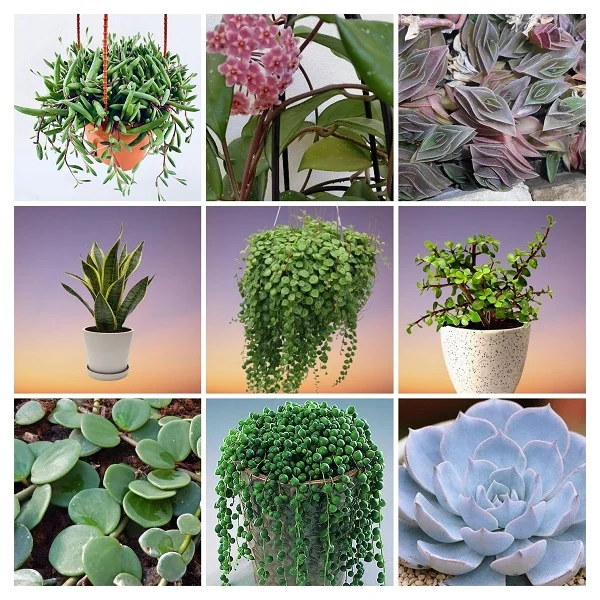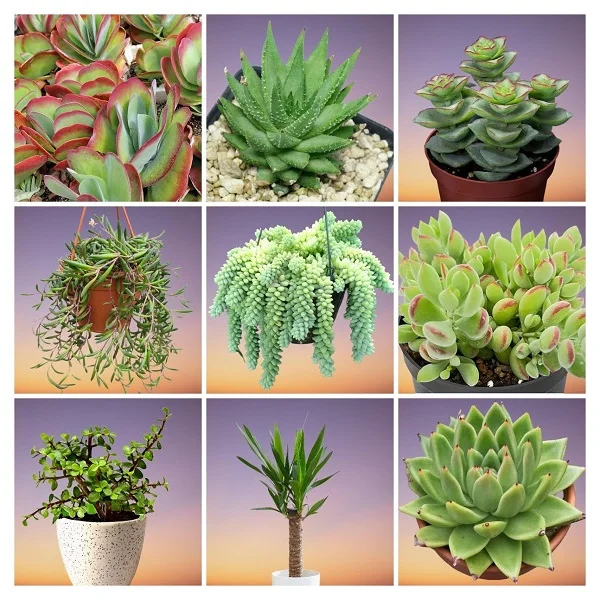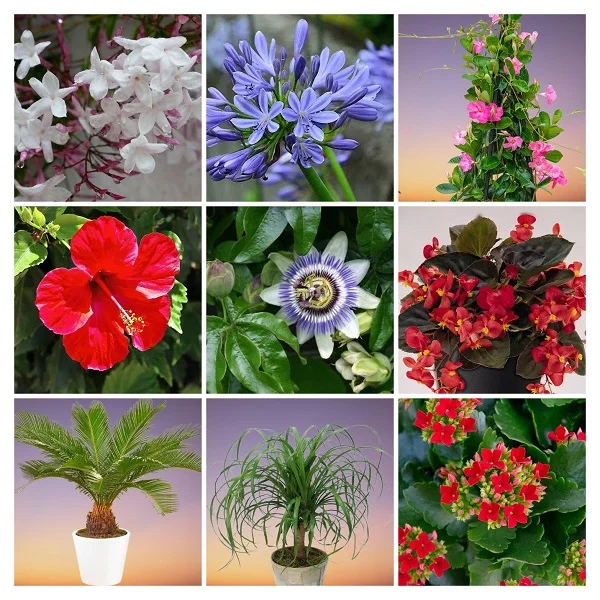Kalanchoe beharensis (Elephant's Ear Kalanchoe) Care Indoors, Problems and Remedies
Some links in this post may be affiliate links
Elephant's Ear Kalanchoe (Kalanchoe beharensis) thrives in bright light to full sunlight, average warmth, moderate humidity and moderately moist, rich, well-drained soil with monthly feeding in the growing season.
Kalanchoe beharensis also called Felt Bush, Velvet Elephant Ear or Velvet Leaf Kalanchoe is among the popular Kalanchoe varieties and is grown for its large, fleshy, velvety foliage which is covered by brown hairs.
The leaves in Felt Bush are succulent, olive-green, traingular-shaped, arranged in pairs at right-angles to each other with margins that are doubly crinkled. Each leaf is about 4 inches long and 2-4 inches wide.
On account of its succulent foliage which store waters, enabling it to go for considerably long without being watered, Velvet Elephant Ear Plant and its cousins Kalanchoe blossfeldiana (Flaming Katy), Kalanchoe thyrsiflora (Paddle Plant) and Kalanchoe marmorata (Pen Wiper Plant) are among the best drought tolerant plants that you can grow in any suitable space.
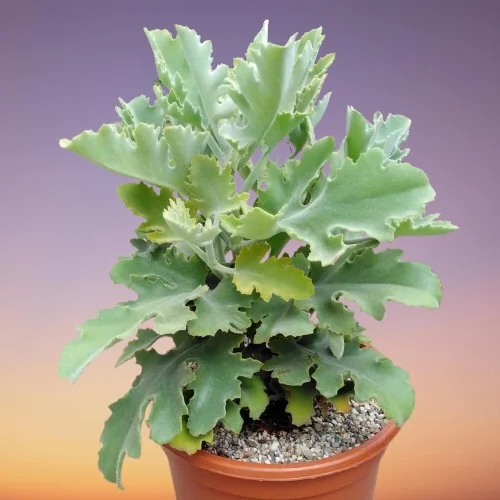
Botanical name: Kalanchoe beharensis
Family: Crassulaceae
Common names: Elephant's Ear Kalanchoe, Felt Bush, Velvet Elephant Ear, Velvet Leaf Kalanchoe
Origin
Kalanchoe beharensis (Elephant's Ear Kalanchoe) is native to Madagascar.
How big do Kalanchoe beharensis get?
Kalanchoe beharensis can grow to a height of 3-5 feet. The olive-green, triangular-shaped leaves are about 4 inches long and 2-4 inches wide. The stems are slender and knotted.
Are Kalanchoe beharensis toxic?
Kalanchoe beharensis like other Kalanchoe Plants contains Calcium glycosides which are toxic to animals as listed by ASPCA. Keep the Elephant's Ear Kalanchoe away from the reach of children, cats, dogs and other pets to prevent any mishaps.
Where to Buy
Would you like to add Kalanchoe Plants to your collection? You may obtain them online from Etsy (Link to Etsy).
How do you care for Kalanchoe beharensis indoors?
To care for Kalanchoe beharensis indoors provide bright light to full sunlight, average warmth of 16-260C, moderate humidity of 50-55% and moderately moist, rich, well-drained, succulents soil with monthly feeding in the growing season.
Elephant's Ear Kalanchoe care requires repotting only when it becomes pot-bound. Pruning is necessary to keep the plant neat and tidy as well as discourage pest and disease infestations. Keep reading for more on these growing conditions and how to achieve them.
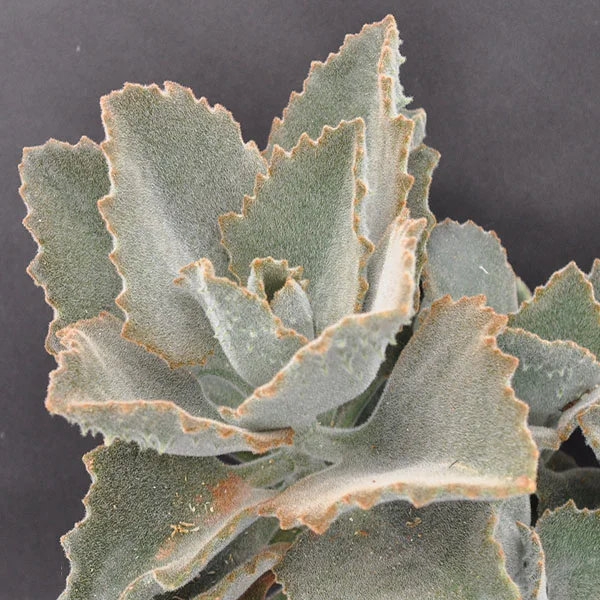
Watering
Water Kalanchoe beharensis thoroughly in spring and summer and allow the top 2-3 inches of soil to dry out between waterings. Avoid overwatering as it can cause rotting.
Water very infrequently in fall and winter to keep the soil slightly moist as growth is minimal at this time. However, do not allow the soil to dry out completely to avoid wilting.
Use a pot that has a drainage hole and well-draining soil to avoid root-rot and eventual death of the plant.
Avoid wetting the leaves as it can lead to rotting; water from the bottom instead. Being a tropical plant, cold water will cause it to go into shock leading to slowed growth; water with room temperature water.
Light Requirements
Elephant's Ear Kalanchoe grows best in bright light to full sunlight. However, do not expose it to hot midday sunshine to prevent scorching of the leaves.
Too little light will result in leggy growth. You may grow Velvet Elephant Ear under grow lights if the natural light is not sufficient.
Regularly rotate the pot to ensure that the plant receives light on all sides for even growth and prevent leggy growth.
Should you choose to take your Felt Bush outdoors, gradually acclimate it and place it in a shaded place to avoid scorching.
Temperature and Humidity
Kalanchoe beharensis flourishes in average warmth of 16-260C. The sudden change in temperature between day and night is excellent for this succulent as it mimicks its natural environment.
Keep it away from drafts coming from windy doors and windows, AC units, heat sources and others to prevent sudden changes in temperature which can result in reduced growth and leaf drop.
Elephant's Ear Kalanchoe has no need for extra humidity. Average humidity of 50-55% is adequate for this plant. Ensure that there is good air circulation to prevent fungal infestations.
Fertilizer
Feed your Kalanchoe Elephant Ear with a balanced, liquid fertilizer monthly in spring and fall for a lush growth.
Stop feeding in the cold season as growth is minimal at this time and feeding at this time can lead to fertilizer burn and eventual death of the plant.
Potting Mix
The best potting mix for Kalanchoe beharensis is a well-draining, sandy, or gritty soil that does not become soggy. The soil should be loose enough to allow water to drain out fast enough. Cactus and succulents mix is ideal for this plant.
Repotting
Repot your Elephant's Ear Kalanchoe only when it becomes pot-bound. Use a shallow rather than a deep pot as the plant has a shallow root system.
The pot should be only 1 size larger than the current one. Make sure that the pot has a drainage hole to prevent the soil from getting soggy to avoid root-rot.
A clay pot is preferable as it is porous which allows the soil to dry out faster, preventing it from becoming soggy. Take a look at these terracotta pots with saucer on Amazon.
Pruning & Grooming
Pruning Kalanchoe beharensis involves:
- Removal of dead and diseased leaves to maintain the plant neat and tidy and also discourage pest and disease infestations.
- Cutting back the leggy plant at the beginning of the growing season (spring) to rejuvenate growth.
Ocassionally clean the leaves by damp-wiping with a soft cloth to get rid of dust and also discourage pest and disease infestations.
Kalanchoe beharensis Propagation
Kalanchoe beharensis is propagated at the beginning of the growing season (spring) from leaf cuttings or stem cuttings which can be rooted in water or in soil.
Learn how to propagate Kalanchoe beharensis by 4 easy methods.
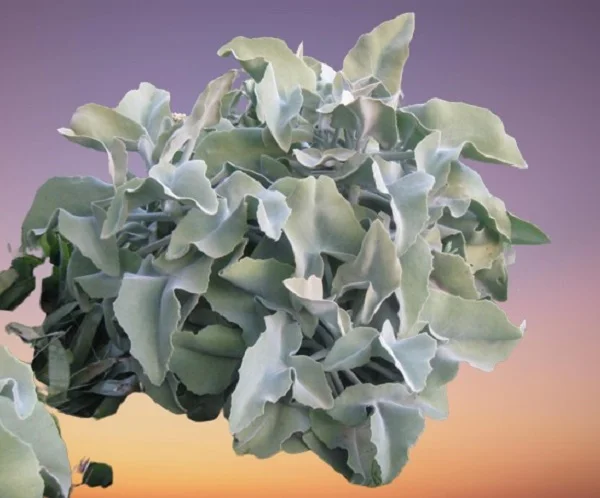
Kalanchoe beharensis Problems & Solutions
Kalanchoe beharensis (Elephant's Ear Kalanchoe) problems are dropping leaves, drooping leaves, leggy growth, pests and diseases among others. Keep reading for more on these problems, their remedies and solutions.
Dropping leaves
Dropping leaves on Kalanchoe beharensis is caused by inconsistent watering and temperature stress.
How to fix it
Inconsistent watering: Do not water on a schedule. Water when the top 2-3 inches of soil dry and do allow the soil ball to dry out completely.
Temperature stress: Keep the plant away from both hot and cold drafts from heat sources, AC units, windy doors among others.
Drooping leaves
Drooping leaves on Elephant's Ear Kalanchoe is caused by underwatering and hot drafts.
How to fix it
Immediately water the plant thoroughly and it should perk up.
Underwatering: Water when the top 2-3 inches of soil feel dry and never allow the soil to dry out completely.
Hot drafts: Keep the plant away from stoves, hot air vents and other heat sources.
Leggy growth
Leggy growth on Kalanchoe beharensis is due to too little light and overfeeding.
How to fix it
Too little light: Move the plant to a brighter spot or instal a grow light if the natural lighting is not enough.
Overfeeding: Feed monthly in the growing season (spring and summer).
Pests
Common pests on Elephant's Ear Kalanchoe are mealybugs and scale insects.
How to fix it
- Isolate the affected plant to reduce spread to other plants and treat it with neem oil or insecticidal soap as per the manufacturer's instructions.
- Regularly damp-wipe the leaves with a soft cloth to keep the pests away.
- Get rid of dead foliage to reduce the hiding and breeding places for these pests.
Diseases
Kalanchoe beharensis is prone to:
1. Root-rot disease which is prevalent in soggy soil. It is characterized by yellowing and wilting of the leaves which is rapidly followed by browning and plant collapse.
How to fix it
- Carefully remove the plant from its pot and inspect the roots.
- Trim brown-black mushy roots and treat the healthy roots with a copper-based fungicidal solution as indicated on the label.
- Disinfect the pot with the fungicidal solution or use a fresh pot to repot the plant in fresh, well-draining soil.
- Do not water the plant immediately and keep it dry for 5-7 days before you can resume watering.
- Use a pot with a drainage hole and well-draining soil at all times to prevent the soil from soggy.
- Decrease watering in fall and winter as growth is slowed at this time; keep the soil slightly moist.
2. Basal stem-rot disease which is promoted by overwet conditions coupled with wide temperature fluctuations. The disease is characterized by rotting at the base followed by yellowing and shriveled leaves. It is infectious and difficult to control.
How to fix it
- Remove and destroy the affected plant as soon as possible to prevent spread to other plants.
- Water only when the top 2-3 inches of soil dry out.
- Use a pot with a drainage hole and well-draining soil to prevent overwatering.
- Keep the plant away from drafts to avoid temperature flactuations.
Conclusion
Caring for Kalanchoe beharensis indoors is relatively easy as long as you provide the right conditions; bright light, well-draining soil, and infrequent watering. By proper care and addressing common problems early, you can enjoy this striking succulent for years to come.
You liked it? Share on social media.
Related Content
Amazon Associates Disclosure
Homeplantsguide.com is a participant in the Amazon Services LLC Associates Program, an affiliate advertising program designed to provide a means for sites to earn advertising fees by advertising and linking to amazon.com.



